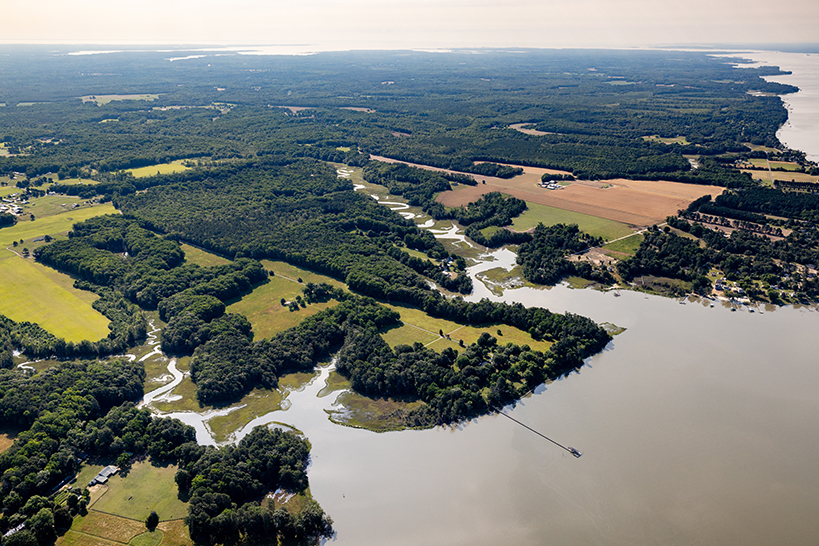
Middle Peninsula’s Marshes and Living Shorelines Generate More than $6.4 Million Annually in Economic Value
Marshes, living shorelines, and hardened shorelines are some of the types of shorelines found along the Middle Peninsula of Virginia. Photo: Will Parson/Chesapeake Bay Program with aerial support by Southwings.
Living shorelines and marshes in the Middle Peninsula Habitat Focus Area support more than $6.4 million each year in economic value from recreational fishing. That’s more than three and a half times the value generated by hardened shorelines in the area.
These data are from a study recently published by the Virginia Institute of Marine Science in Ocean & Coastal Management. The NOAA Chesapeake Bay Office provided funding for VIMS’s research through an NCBO Fisheries Research Program grant. The Virginia Marine Resources Commission also supported the study.
Researchers heard from more than 1,500 anglers, who responded to questions about their fishing trips. Anglers around the Middle Peninsula fish near marshes and living shorelines more frequently than other areas. They also found that their efforts to fish in these areas provided a better bang for their buck—that fishing near these habitats was a good investment of their time and money.
Living shorelines and marshes provide habitat that support many species. They provide shelter for smaller fish and juveniles that are important to the food chain in the Chesapeake Bay. Because a diverse set of fish use these areas, they are also great spots for fishing.
Living shorelines and marshes also help soak up energy from waves and because of that, they can help control erosion. They also filter out some unwanted nutrients and can trap sediment from flowing further into the Bay.
The Middle Peninsula Habitat Focus Area faces sea level rise, coastal storms, and other challenges. But it also has the potential to be more resilient thanks to efforts to protect and restore important habitats there. That’s why NOAA selected the Middle Peninsula to be a Habitat Focus Area.
